#krogen
Explore tagged Tumblr posts
Text
I like how after Dagur becomes a good guy, he doesn’t lose his deranged nature. He’s still very much Dagar the Deranged, but less revengey.
#httyd#race to the edge#dagur the deranged#he straight up plays chicken with Krogen while riding dragons#and crackles madly the whole time#lol revengey isn’t a word but it sounded right for this
779 notes
·
View notes
Text
I keep wanting to call him Kroger. Someone Photoshop (or whatever fuck the corporations) the Kroger logo onto Krogen's face for me. Please. I don't have access to proper photo editing software.
#how to train your dragon#for how to train your dragon#my shit#life adventures#anyway im on the penultimate episode of race to the edge#fuck it. his name is kroger now
3 notes
·
View notes
Text
El Coco
El Coco or Coca (also known as the Cucuy, Cuco, Cuca, Cucu or Cucuí) is a mythical ghost-like monster, equivalent to the bogeyman, found in many Hispanophone and Lusophone countries. It can also be considered an Iberian version of a bugbear as it is a commonly used figure of speech representing an irrational or exaggerated fear. The Cucuy is a male being while Cuca is a female version of the mythical monster. The "monster" will come to the house of disobedient children and make them "disappear".

The myth of the Coco, or Cucuy, originated in northern Portugal and Galicia. According to the Real Academia Española, the word coco derives from the Galician and Portuguese côco, which means "coconut". The word coco is used in colloquial speech to refer to the human head in Spanish. Coco also means "skull". The word cocuruto in Portuguese means "the crown of the head" or "the highest place" and with the same etymology in Galicia, crouca means "head", from proto-Celtic *krowkā-, with variant cróca; and either coco or cuca means "head" in both Portuguese and Galician. It is cognate with Cornish crogen, meaning "skull", and Breton krogen ar penn, also meaning "skull". In Irish, clocan means "skull".
Many Latin American countries refer to the monster as el Cuco. In northern New Mexico and southern Colorado, where there is a large Hispanic population, it is referred to by its anglicized name, "the Coco Man". In Brazilian folklore, the monster is referred to as Cuca and pictured as a female humanoid alligator, derived from the Portuguese coca, a dragon.
In Spain, Portugal, and Latin America, parents sometimes invoke the Coco or Cuca as a way of discouraging their children from misbehaving; they sing lullabies or tell rhymes warning their children that if they don't obey their parents, el Coco will come and get them and then eat them.
It is not the way the Coco looks but what it does that scares most. It is a child eater and a kidnapper; it may immediately devour the child, leaving no trace, or it may spirit the child away to a place of no return, but it only does this to disobedient children. It is on the lookout for children's misbehavior from the rooftops; it takes the shape of any dark shadow and stays watching. It represents the opposite of the guardian angel and is frequently compared to the devil. Others see the Coco as a representation of the deceased of the local community.
The oldest known rhyme about the Coco, which originated in the 17th century, is in the Auto de los desposorios de la Virgen by Juan Caxés.
The rhyme has evolved over the years, but still retains its original meaning:
Duérmete niño, duérmete ya... Que viene el Coco y te comerá
Sleep child, sleep or else... Coco will come and eat you
The Portuguese lullaby recorded by José Leite de Vasconcelos tells Coca to go to the top of the roof. In other versions of the same lullaby, the name of Coca is changed to that of "papão negro" (black eater), the name of another bogeyman.
Vai-te Coca. Vai-te Coca Para cima do telhado Deixa o menino dormir Um soninho descansado
Leave Coca. Leave Coca Go to the top of the roof Let the child have A quiet sleep
The traditional Brazilian lullaby is as follows, with the Cuca as a female humanoid alligator:
Dorme neném Que a Cuca vem pegar Papai foi pra roça Mamãe foi trabalhar
Sleep little baby That Cuca comes to get you Daddy went to the farm Mommy went to work
Both Brazilians and Portuguese also have a bogeyman version, which sometimes acquires regional colors where the bogeyman (the shape-shifting Bicho Papão is a monster that is shaped by what the child fears most) is a small owl, murucututu, or other birds of prey that could be on the roof of homes at night (in Brazil) or a mysterious old man with a bag who is also waiting on the roof of the house (in Portugal).
Bicho papão Em cima do telhado Deixa o meu menino dormir Um soninho sossegado
Bogeyman Atop the roof Let my child have A quiet sleep
Verses and songs were used in pre-Roman Iberia to transmit history to the younger generations, as told by ancient authors. Sallust said the mothers sang the military feats of the fathers to incite the children to battle. He was later quoted by Servius, who emphasised that it was the role of the mothers to remember and teach the young men about the war feats of their fathers. Silius Italicus added more; he said that the young warriors sang songs in their native language while hitting their shields in the rhythm of the songs and that they were well versed in magic. Strabo, too, commented that history was recorded in verse.
During the Portuguese and Spanish colonization of Latin America, the legend of the Coco was spread to countries such as Mexico, Argentina and Chile.
There is no general description of the cucuy, as far as facial or body descriptions, but it is stated that this shapeshifting being is extremely horrible to look at. The coco is variously described as a shapeless figure , sometimes a hairy monster, that hides in closets or under beds and eats children that misbehave when they are told to go to bed.
Coca is also the name of a female dragon who featured in various medieval celebrations in the Iberian Peninsula. In Portugal one still survives in Monção; she fights in some sort of medieval tournament with Saint George during the Corpus Christi celebrations. She is called Santa Coca ("Saint Coca"), an allusion to the Irish saint, or Coca rabicha ("Tailed Coca"). If she defeats Saint George by scaring the horse, there will be a bad year for the crops and famine; if the horse and Saint George win by cutting off one of her ears with earring and her tongue, the crops will be fertile. Oddly enough, the people cheer for Saint Coca. In Galicia there are still two dragon cocas, one in Betanzos and the other in Redondela. The legend says that the dragon arrived from the sea and was devouring the young women until she was killed in combat by the young men of the city. In Monção, the legend says, she lives in the Minho; in Redondela she lives in the Ria of Vigo. The dragon shared the same name that was given in Portuguese and Spanish to the cog (a type of ship), and although used mainly for trade, it was also a war vessel common in medieval warfare and piracy raids on coastal villages.
The oldest reference to Coca is in the book Livro 3 de Doações de D. Afonso III from the year 1274, where it is referred to as a big fish that appears on the shore: "And if by chance any whale or sperm whale or mermaid or coca or dolphin or Musaranha or other large fish that resembles some of these die in Sesimbra or Silves or elsewhere[.]"
In Catalonia, the Cuca fera de Tortosa was first documented in 1457. It is a zoomorphic figure that looks like a tortoise with a horned spine, dragon claws and a dragon head. The legend says she had to dine every night on three cats and three children. This legend of the Coca can be compared to the one of Peluda or Tarasque.
In Brazil, the Coco appears as a humanoid female alligator called Cuca. She is dressed like a woman with ugly hair and a sack on her back. Cuca appears as the one of the main villains in children's books Sítio do Picapau Amarelo by Monteiro Lobato, but in the books she appears like a powerful witch that attacks innocent children. Artists illustrating these books depicted the Cuca as an anthropomorphic alligator. She is an allusion to Coca, a dragon from the folklore of Portugal and Galicia.
The sailors of Vasco da Gama called the fruit of the Polynesian palm tree "coco". The word "coconut" is derived from their name.
Traditionally in Portugal, however, the coco is represented by an iron pan with holes, to represent a face, with a light inside; or by a vegetable lantern carved from a pumpkin with two eyes and a mouth, which is left in dark places with a light inside to scare people. In the Beiras, heads carved on pumpkins, called coca, would be carried by the village boys, stuck on top of wooden stakes.
The same name [Coca] is given to the pumpkin perforated with the shape of a face, with a candle burning in the inside—this gives the idea of a skull on fire—that the boys on many lands of our Beira carry stuck on a stick.
An analogous custom was first mentioned by Diodorus Siculus (XIII.56.5;57.3), in which Iberian warriors, after the battle of Selinunte, in 469 BC, would hang the heads of the enemies on their spears. According to Rafael López Loureiro, this carving representation would be a milenar tradition from the Celtiberian region that spread all over the Iberian Peninsula.
The autumnal and childish custom of emptying pumpkins and carving on its bark, eyes, nose and mouth looking for a sombre expression, far from being a tradition imported by a recent Americanizing cultural mimicry, is a cultural trait in ancient Iberian Peninsula.
This representation would be related to the Celtic cult of the severed heads in the Iberian peninsula. According to João de Barros, the name of the "coconut" derived from coco and was given to the fruit by the sailors of Vasco da Gama, c.1498, because it reminded them of this mythical creature.
This bark from which the pome receives its vegetable nourishment, which is through its stem, has an acute way, which wants to resemble a nose placed between two round eyes, from where it throws the sprout, when it wants to be born; by reason of such figure, it was called by our [men] coco, name imposed by the women on anything they want to put fear to the children, this name thus remained, as no one knows another.
Rafael Bluteau (1712) observes that the coco and coca were thought to look like skulls, in Portugal:
Coco or Coca. We make use of these words to frighten children, because the inner shell of the Coco has on its outside surface three holes giving it the appearance of a skull.
In the first half of the 20th century the coca was an integral part of festivities like All Souls' Day and the ritual begging of Pão-por-Deus. The tradition of Pão-por-Deus, already mentioned in the 15th century, is a ritual begging for bread and cakes, done door to door by children, though in the past poor beggars would also take part. Its purpose is to share the bread or treats gathered door to door with the dead of the community, who were eagerly awaited and arrived at night in the shape of butterflies or little animals, during the traditional magusto. In Portugal, depending on the region, the Pão-por-Deus assumes different names: santoro or santorinho, dia dos bolinhos (cookies day), or fieis de deus. This same tradition extends to Galicia, where it is called migallo. It has a close resemblance with the traditions of souling or nowadays trick-or-treating. While the Pão-por-Deus or Santoro is the bread or offering given to the souls of the dead, the Molete or Samagaio is the bread or offering that is given when a child is born.
In this same city of Coimbra, where we find ourselves today, it is customary for groups of children to walk on the streets, on the 31st October and 1st and 2nd November, at nightfall, with a hollow pumpkin with holes that were cut out pretending to be eyes, nose and mouth, as if it was a skull, and with a stump of candle lit from within, to give it a more macabre look.
In Coimbra the begging mentions "Bolinhos, bolinhós" and the group brings an emptied pumpkin with two holes representing the eyes of a personage and a candle lit in the inside [...] another example of the use of the pumpkin or gourd as a human representation, is in the masks of the muffled young men during the desfolhada, the communal stripping of the maize, in Santo Tirso de Prazins (Guimarães), which after, they carry hoisted on a stick and with a candle in the inside, and leave them stuck on any deserted place to put fear to who is passing by.
To ensure that the souls found their way back home, the Botador de almas, whose mission was to lay souls (botar almas), would go every night through valleys and mountains and up on trees ringing a little bell, or carrying a lantern and singing a prayer to the souls. Every Portuguese village had one. Calling and singing to the souls is an ancient tradition done either by one person alone or in groups and it has many names: "lançar as almas", "encomendar as almas", "amentar as almas", "deitar as almas", "cantar às almas santas".
The serandeiros are disguised young men, covered with a blanket, a bed sheet or a hooded cloak. They carry a staff (a stick of quince or of honeyberry, about their own height) in one hand, and in the other they carry a small bundle of basil or apples that they make the girls that take part of the desfolhada smell, or with which they tickle people's cheeks; sometimes, to play a prank, they bring stinging nettles. When a girl recognizes the serandeiro or if she recognizes her boyfriend masked as a serandeiro, she throws him an apple brought from home. The serandeiros represent the spirits of the dead, the spirits of nature.
The heads would have protective and healing powers, protecting people and communities. They would also be cherished for their divinatory, prophetic and healing powers. The display places for the Iron Age severed heads were in the inside or outside of buildings with a preference for public places, with streets and people passing by and always preferring high places.
Our Ladies
In Portugal, rituals among the Catholic religious order of Our Lady of Cabeza, a Black Madonna, include the offering of heads of wax to the Lady, praying the Hail Mary while keeping a small statue of Our Lady on top of the head; the pilgrims pray with their own heads inside a hole in the wall of the chapel. The Chapel of Our Lady of the Heads (Nossa Senhora das Cabeças) situated 50 m (160 ft) northwest of the ruins of the Roman era temple of Our Lady of the Heads (Orjais, Covilhã) evidences a continuity in the use of a sacred space that changed from a pagan worship cult area to a Christian one and continued to be a place of worship for centuries after. According to Pedro Carvalho, the pre-Roman findings and the unusual location of the ruins inside an 8th-century BC hillfort suggest it was the place of a pre-Roman cult.
The Lady of the Head and Lady of the Heads are two of the many names given to Our Lady. Several of her names are thought to be of pre-Roman origin. Names like Senhora da Noite ("Lady of the Night"), Senhora da Luz ("Lady of the Light"), Señora de Carbayo ("Lady of the Oak Tree") are spread all over the peninsula. In Portugal alone 972 titles for Our Lady have been found in churches, altars and images, not including the names of villages and places. Spain has a similar proliferation of titles for Our Lady.
The common element to all these names is the title Lady. But the title Senhora (Portuguese) or Señora (Spanish) is of Latin origin, and derives from the Latin senior; thus there had to be another one of pre-Roman origin. In ancient times the titles that were used in Portugal by the ladies of the court were Meana (me Ana) or Miana (mi Ana) and Meona (me Ona); these words meant the same as miLady, that is, Ana and Ona were synonyms of Senhora and Dona. Ana is the name of the river Guadiana, thus pre-Roman in origin. Ana is also the name of a goddess of Irish mythology.
In the village of Ponte, parish of Mouçós, on a hill that overlooks the River Corgo, there is a chapel called Santo Cabeço which legend says was built by the mouros encantados. On the wall facing south there is a hole, where legend says the mouros used to put their head to hear the sound of the sea. The local people also have the custom of putting their head inside the hole: some to hear the whisper that is similar to the waves of the sea, others to heal headaches.
In Alcuéscar, Spain, a legend says that a princess exhibited a stall of skulls and human bones.
The Farricoco in the procession "Ecce Homo" on Maundy Thursday, in Braga, Portugal
In Portugal, coca is a name for a hooded cloak; it was also the name of the traditional hooded black wedding gown still in use at the beginning of the 20th century. In Portimão during the holy week celebrations, in the procissão dos Passos (Spanish: Procesión de los Pasos), a procession organized by the Catholic brotherhoods, the herald, a man dressed with a black hooded cloak that covered his face and had three holes for the eyes and mouth, led the procession and announced the death of Christ. This man was either named coca, farnicoco, (farricunco, farricoco from Latin far, farris and coco) or death. The name coca was given to the cloak and to the man who wore the cloak.
In 1498, the Portuguese King Manuel I gave permission to the Catholic brotherhood of the Misericórdia to collect the bones and remains from the gallows of those that had been condemned to death and put them in a grave every year on All Saints' Day. The brotherhood in a procession, known as Procissão dos Ossos, were followed by the farricocos, who carried the tombs and collected the bones.
In the travels of the Baron Rozmital, 1465-1467, a paragraph was written commenting on the traditional mourning clothes of the Portuguese of that time. The relatives of the deceased who accompanied his funeral would be clad in white and hooded like monks, but the paid mourners would be arrayed in black."[...] white was worn as the garb of mourning until the time of King Manuel, at the death of whose aunt, Philippa, black was adopted for the first time in Portugal as the symbol of sorrow for the dead".
Os cocos, giant representation of the coco and coca of Ribadeo. The tradition dates back to the 19th century.
In Ribadeo, two giant figures represent "el coco y la coca" that dance at the sound of drummers and Galician bagpipe players.
The 'land of the dead' is a mythic land which appears in traditions from various cultures around the ancient world.
Probably the oldest mention of a mythic land of the dead located in the Iberian Peninsula is in the Lebor Gabála Érenn.
The legends of Portugal and Spain speak of an enchanted land, the Mourama, the land where an enchanted people, the Mouros dwell under the earth in Portugal and Galicia. The lore of Galicia says that "In Galicia there are two overlapped people: a part lives on the surface of the land; they are the Galician people, and the other in the subsoil, the Mouros". Mourama is the otherworld, the world of the dead from where everything comes back.
The Mourama is ruled by an enchanted being who is called rei Mouro (king Mouro). His daughter is the princesa Moura (princess Moura), a shapeshifter who changes herself into a snake, also called bicha Moura, or can even be seen riding a dragon.
youtube
9 notes
·
View notes
Text
28.06.2023 Tag 20 in Schweden 🇸🇪, Dänemark 🇩🇰 und Deutschland 🇩🇪 Heute ging es weiter über die Autobahn nach Helsingborg (Schweden). Hier nahmen wir die Fähre nach Helsingør in Dänemark. Diese fährt alle 20 Minuten und wir mussten nur kurz warten. Als wir drüben waren suchten wir uns einen Parkplatz und liefen zum Schloss Kronborg. An dieser Stelle wurde 1420 unter dem Namen Krogen die erste Festung errichtet. Bekannt ist das Schloss heute auch als „Hamletschloss“, da William Shakespeare hier die Handlung seines Schauspiels Hamlet ansiedelte. Weiter ging es Richtung Kopenhagen. Dort staute es sich wieder wie verrückt… Wir mussten da allerdings durch um an den Hafen nach Rødby zu kommen. Hier nehmen wir um 20:15 die Fähre nach Puttgarden auf der Insel Fehmarn. Die braucht etwa 45 Minuten. Dort werden wir uns ein Plätzchen zum schlafen suchen. Diese Fahrerei ist ganz schön anstrengend… 🥵
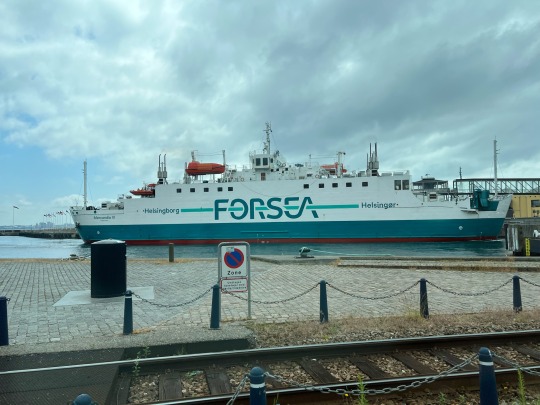
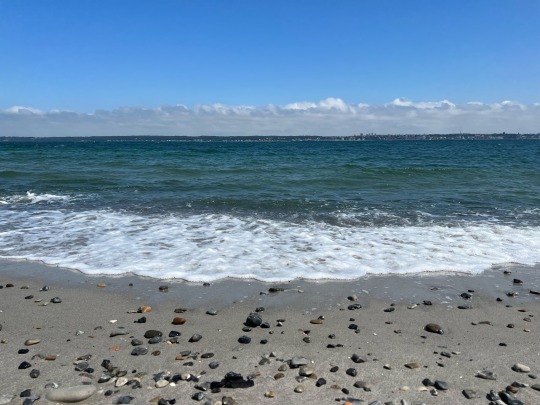
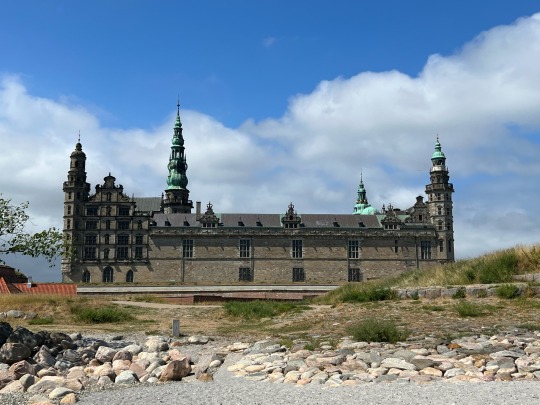
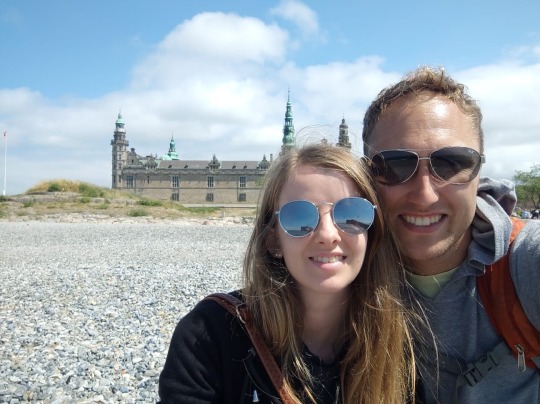
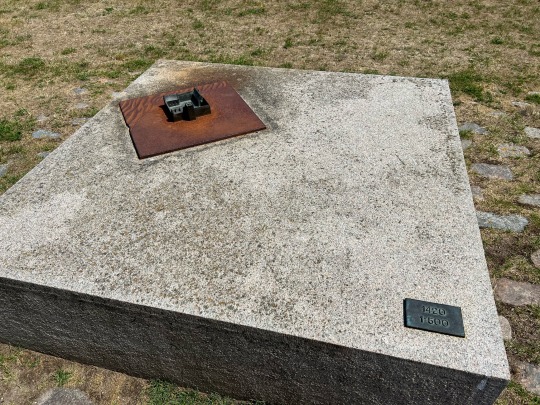
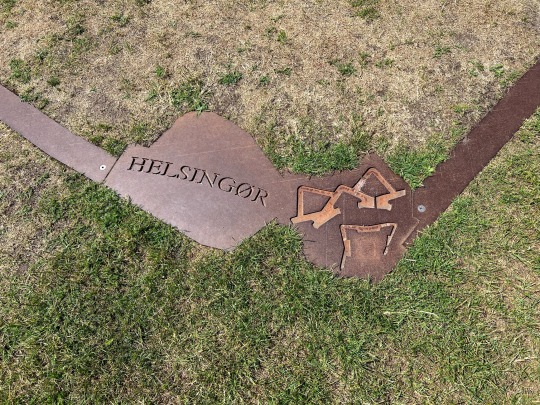
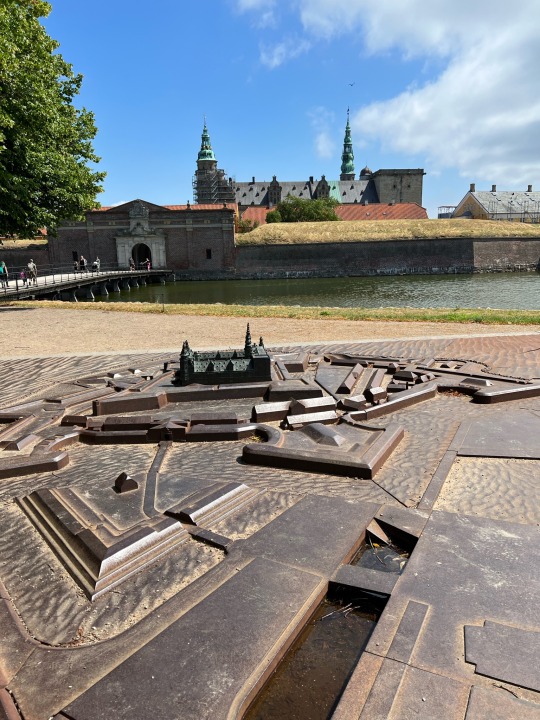
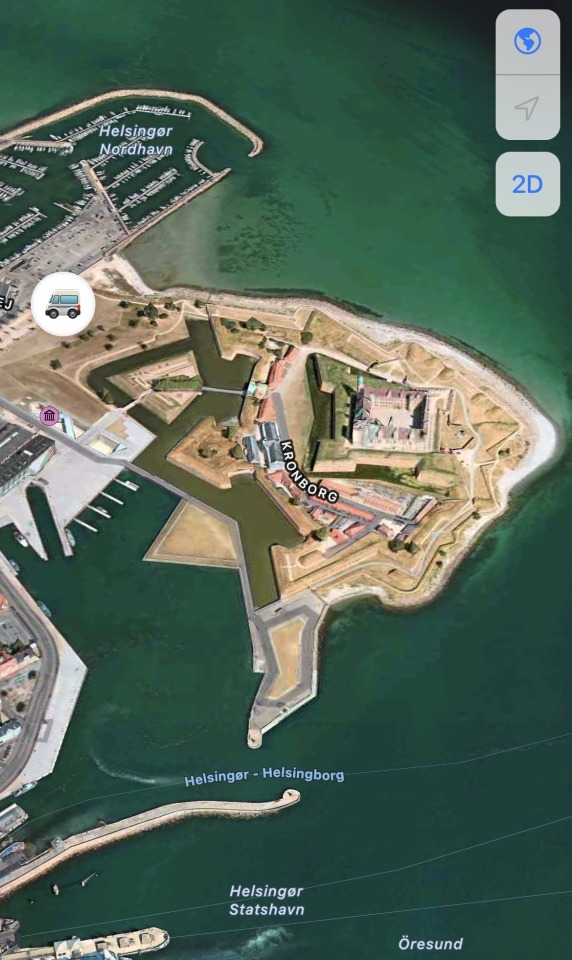
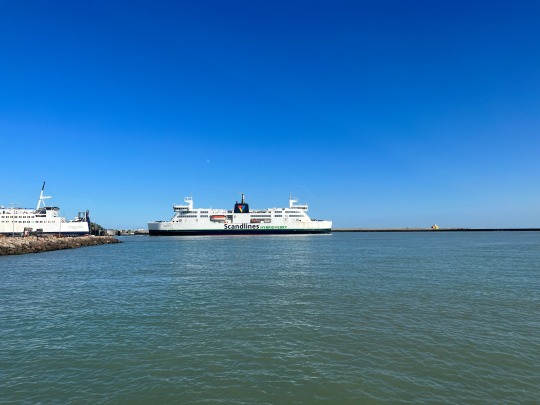
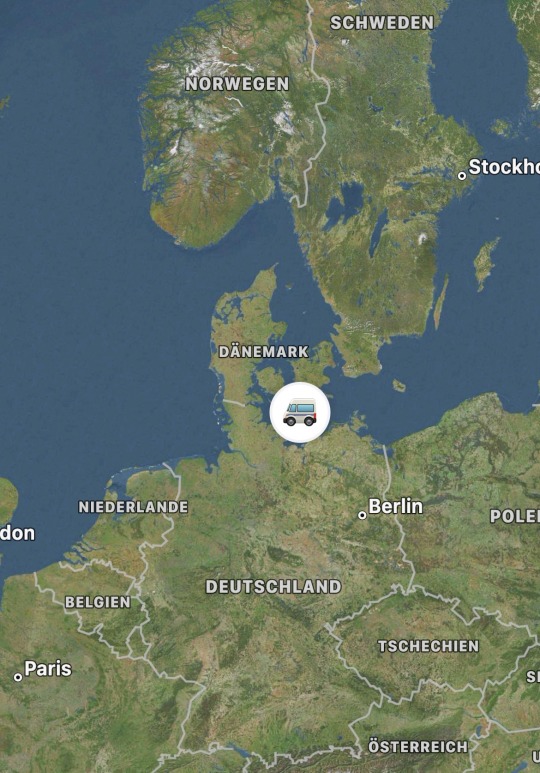
2 notes
·
View notes
Text
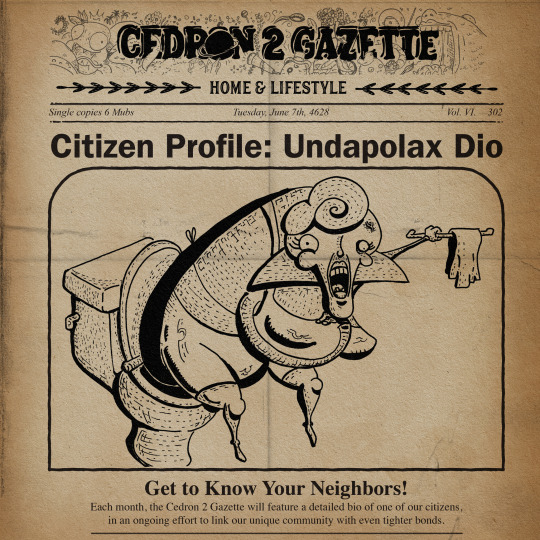
HEIGHT: 3”8
WORK HISTORY: Two tours with Dairy Queen Blizzard Division
WEIGHT: 132 Woven Baskets
FAVORITE BREAD: Eight grain tasteless by Krogen Farms
TAIL: Yes and No. Technically it was removed but a small stub remains
IDEAL RELAX MOVES: Bottle of red and Perfect Strangers reruns
EYELASHES: Unequivocal
PATIENCE: Very limited, especially at airports
PREFERRED SALUTATIONS: Firm handshake and a kiss
MARITAL STATUS: Divorced thrice
PETS: Two Muskrats Milli and Vanilli
SPY TACTICS: Hidden Cameras, smoke bombs and a network of little birds. The usual
EYES: Beady blue
HOBBIES: Dice, horoscopes, sandpaper maker club
YEARS LIVED IN CEDRON 2: All its life. Dio is a third generation Haskugen by way of Chellech
POLITICAL VIEWS: Conservative on taxes, liberal in the bedroom
GO TO BOOKS: “Lost on Banks Lake the Denny Mowswow story” and “the Trial of Denny Mowswow and what really happened at Banks Lake”
FAVORITE YOUTUBE SHOW: Duh. It’s own . Cooking with Undapolax Dio
#web comics#comedy comics#web comic#comics#funny art#comic#funny images#funny post#funny jokes#independent comics#stupid#profile#cedron2
4 notes
·
View notes
Text
Tips til at vælge et effektivt flyttebureau i Randers
Når man overvejer at flytte til et eksklusivt sted, er det ikke tilstrækkeligt stort set at vælge et skiftende selskab. At vælge den rigtige overførselsorganisation er afgørende, hvis du har brug for, at hele proceduren kan fortsætte nemt. Denne særlige grad er den mest vitale fase – at vide, hvordan man foretager det rigtige valg, kan spare dig for en række tid, penge og forskellige forstyrrelser. Denne guide vil hjælpe dig, uanset om du flytter rundt i krogen eller flytter til ethvert andet land.
Hvorfor bruge et stiftet flyttebureau i Randers?
Så der er positive sider ved at ansætte et flyttebureau Randers, der har specialiseret sig i flytninger. For lokale flyttemænd Randers er geografien ikke helt fremmed for dem, derfor er effektiviteten af logistikken forbedret. De ville kende de bedste ruter at tage og dermed spare tid og reducere mulige forsinkelser. Derudover er der lokale virksomheder, der er engageret i de lokalsamfund, de betjener, og derfor eksisterer der allerede en grad af kvalitetskontrol.
https://jpcdn.it/img/7d6df0bfe933ee16b4a8fad6da086704.webp
Årsager til at vælge et flyttefirma ved at bruge en disk
En af de mest ting at overveje ville være typen flyttefirma skive service tilbydes af dem. Grunden til, at dette tilbydes af mange virksomheder, er, fordi det er omkostningseffektivt og udspringer af en miljøvenlig praksis. I næsten alle bevægelser er skader et vedvarende problem under transport, som derefter kunne pakkes grundigt ved brug af diske. Det sikrer, at det vil være pænt at flytte til din nye adresse, samtidig med at det sikrer, at varerne vælges intakte.
Også virksomheder, der gør brug af disk-baseret flytning, har en tendens til at fokusere på at være miljøvenlige det meste af tiden. Med fremkomsten af øko-bevidste forbrugere er dette en win-win situation, da man kan nyde tjenesterne, mens man samtidig hjælper med miljøbevarelse.
Råd om, hvordan du finder et billigt flyttefirma
For dem, der arbejder på et stramt budget, henvender sig til en billige flyttefirma behøver ikke at være en mulighed, du fortryder at have valgt. For at begynde skal du tage dig tid til at indhente tilbud fra forskellige udbydere i dit område og sammenligne priser og service. Tjek også anmeldelser og udtalelser fra kunder, der tidligere blev serveret, for at se, om du kan stole på virksomheden.
Du kan også spørge, om der er nogle igangværende kampagner eller planer, der er designet til dig. Nogle virksomheder tilbyder lavere priser under ikke-spidsbelastningstider eller ved mindre flytninger. Endnu en strategi er at komme af med overskuddet, det gør det mindre stressende, da det reducerer de samlede transportudgifter.
https://jpcdn.it/img/752a82a26e641262bafc6b858a6f3638.webp
Trin at følge for en vellykket flytning
For at få en problemfri proces, skal du lave dine bevægelser et par uger før dagen. Forbered en tjekliste over ting, der skal gøres og udføres, såsom: at identificere en flyttefirma Randers, pakning af dine varer og ændring af din adresse hos relevante tjenesteudbydere.
Hvis du bruger den professionelle og diskserviceproducerende firmapakke til dig, skal du indstille dine krav i begyndelsen. Noget følsomt eller er i tvivl, så spørg dem, om de har særlige behov.
Hvis du leder efter overkommelige flytninger, skal du sikre dig, at de mellemstatslige overførende organisationer, du vælger, er forsikrede og autoriserede. På denne måde er du dækket af i tilfælde af tab eller nogle skader på et tidspunkt under flytningen.
0 notes
Text
Gjorde du något 2024 som du aldrig gjort förut? Födde barn och allt som har med bebisar att göra, förlovade mig, blev husägare, fyllde 30!
Vilka länder/städer besökte du? Helsingborg, Västerås, Linköping, västkusten, Åland har inte varit ett jetsetter-år direkt men har turnerat runt med bebisen.
Vad var din största framgång 2024? Tryckte ut en unge och överlevde. Det här var också mitt mest vuxna år hittills i livet… coolt?
Bästa köpet? Vårat hus och nyrenoverade badrum + Maggies babysitter hehe.
Gjorde någonting dig riktigt glad? Maggie-Maj och Oskar givetvis.
Och ledsen? Starta amning, aj fyfan i helvete.
Bästa matupplevelsen? Jag och Oskar åt en väldigt god köttbit på skottdagen på lilla krogen.
Bästa boken du läste i år? Vargarna från evighetens skog, har fortfarande inte läst ut den men jag har haft annat för mig!!!!!!
Favoritserie? Fallout och Severence och shogun för fän.
Årets låtar? Sista gång, Kite
Var du gladare eller ledsnare i år jämfört med tidigare år? Gladare! Stabilaste humöret sen 94, graviditet var toppen, fuck hormoner.
Är det något du saknar 2024 som du vill ha år 2025? Nej, jag försöker komma på något men i’m drawing a blank. Jo lite mer rörlighet i kröppa min, stelare och fetare än någonsin nu!
Högsta önskan just nu? Att Maggie fortsätter vara en väldigt snäll och frisk bebis.
1 note
·
View note
Text
Aliens in Mass Effect who I think want to touch the human "fringe" (hair):
Want to touch
- Turians
- Asari
- Quarians
- Geth
- Vorcha
- Salarians
Do Not want to touch:
- Krogen
- Batarians
- Volus
- Hanar
- Drell
- Elcor
- Protheans
- Leviathans
1 note
·
View note
Text
idag nyheter - Krönika: Fiskarna, brödet och det som provocerar
Det fanns en gång en pizzeria i Arvika. Det kallades Piccolo. Vi åt vår middag där på väg hem från krogen. En gång fick min kompis Anders bara en bakad botten. Vi var stamkunder, skojade kocken med oss. Som en stor oblat låg den där när vi lyfte på locket på lådan. Humör. Det är något med överdrifter i matlagning som jag vänder mig emot. Det provocerar. Jag kan inte förklara, men jag kan erkänna.…
0 notes
Text
Under hösten för tio år sedan, när jag hade gott om fritid och ont om pengar, tänkte jag mig att den ideala tillvaron vore att vakna upp varje morgon lindrigt fyllsjuk.
Under denna höst, när jag har gott om pengar och nästan ingen fritid, mötte jag en manifestation av den framtid jag föreställt mig för ett decennium sedan. En medelålders man, med slitna kläder och rufsigt hår men renrakad, satt och skyfflade i sig currypasta i en liten krog nära Björkhagen. Klockan var strax efter elva på förmiddagen och han var redan påtagligt berusad trots att krogen öppnade så sent som klockan tio. Under tiden jag satt där, åt pizza och drack en öl medan jag arbetade lite grann fortsatte han att hinka i sig öl. Jag kämpade med koncentrationen på mitt arbete när jag var tvungen att lyssna på hans narcissistiska skitsnack med sina sorgliga kamrater som allteftersom samlades vid hans hörna för att fyllna till och klaga på att socialen var sen med deras stålar. Jag var likafullt djupt ångerfull över att jag valt att också sitta där på en sådan sylta och dricka öl bland dessa fallna män. Vad säger det om mig?
Den här mannens bara delvis ovårdade yttre förde förstås fram tanken att han föreföll vara en direkt vidareutveckling av jaget jag försökte fostra tio år tidigare. Trots att jag under hela mitt liv har sett och till och med fått följa vuxna män med ett fullt utblommat alkoholmissbruk har jag inte före denna dag sett det som sannolikt att min relation till drickande skulle ännu kunna leda till att själv bli detta praktvrak i Björkhagen. När jag förbereder mig för en lekstund utomhus med barnet - som ännu är för ungt för att berätta för någon vad jag sysslar med - räknar jag med minst en stor stark varje halvtimme. På min första vabbdag upprätthöll jag ett milt rödvinsrus från lunch till middag. När jag på sommaren försvinner ned i källaren i sommarhuset för att hämta dagens första öl, sveper jag öl nummer noll på vägen upp för att bana väg för nummer ett. Jag har alltid varit medveten om att mitt förhållningssätt till drickande inte är hållbart; ändå har det hållit i tio år. Frågan är bara om jag någonsin kommer att kunna dricka en svensk stor stark igen utan att skämmas för att komma en öl närmare mardrömmen jag skådade i Söderort.
0 notes
Text
Invigning CAPANNONE BOTTEGA
Invigning av Capannone Bottega Onsdag 25 september på Roslagsgatan 4 i Stockholm. Capannone och Sacha Smederevac med medarbetare bjöd in till en exklusiv invigning av Capannone Bottega. Nu får den hyllade italienska krogen Capannone i hjärtat av Vasastan ett tillskott. Den nya vinbaren Bottega öppnade den 25 Sept. och Cawa Media var inbjudna för att fira detta! Det bjöds…
0 notes
Text
TIME CONSUMED Signs with Wormholedeath for "Long Night of Silence" EP Release
The darkness of doom metal and the ferocity of death metal are set to collide in a new and exciting collaboration. Doom/death metal project TIME CONSUMED has signed an exclusive deal with Wormholedeath for the release of the highly anticipated EP, Long Night Of Silence. The EP is scheduled to drop on October 11, 2024. The creative force behind Time Consumed, Matt Krogen, expressed his gratitude…
0 notes
Text
Avhållsamhet är lättare än måttlighet
Det är ett antal år sedan jag var ute i krogsvängen mer eller mindre frekvent. Men fram tills jag pluggade för 13 år sedan sprang jag på krogen tämligen regelbundet, liksom första tiden jag var tillbaka i Stockholm efter min studietid. Numera kan jag inte påstå att jag saknar att komma hemkrypande framåt morgonkvisten längre. Visst går jag gärna ut och äter och tar en öl, men komma hem framåt…
0 notes
Note
How do krogen view vore in general?
"As something very strange and as alien to them as possible. - Liara began to answer. - As history has shown, it was impossible to make a vore-implant for krogan - too inappropriate a biology. Therefore, few krogan are interested in this issue. Although on their own devouring, if it was done as a result of battle, they look quite phlegmatic. Becoming part of a better warrior is not a bad outcome in the opinion of most krogan"
0 notes
Text
Trista Söndag
Han är på väg hem efter våt natt på krogen, om han går rätt väg? Vet han inte, då han har dimma i huvudet. Source
0 notes
